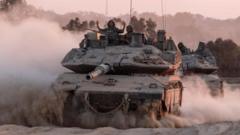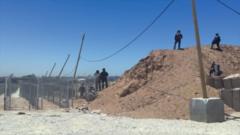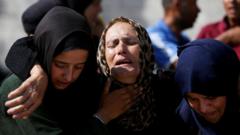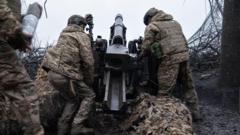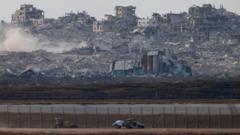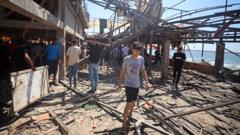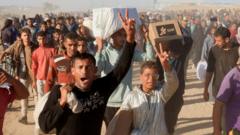The process to recover hostages from Gaza involves intense negotiations and meticulous planning by the International Committee of the Red Cross, Israeli military, and medical teams. With risks ever-present, the release operations demand careful logistical considerations to ensure that the hostages return safely without reigniting conflict.
The Intricate Process of Hostage Negotiations and Releases in the Israel-Hamas Conflict
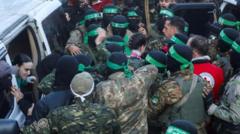
The Intricate Process of Hostage Negotiations and Releases in the Israel-Hamas Conflict
A closer look at how hostages are brought home from Gaza through complex negotiations involving various organizations and personnel.
In the delicate landscape of the Israel-Hamas conflict, one of the most significant undertakings is the operation to secure the return of hostages abducted during the hostilities. The recent releases highlight a complex interplay of diplomacy, security, and humanitarian effort, primarily facilitated by the International Committee of the Red Cross (ICRC).
Presenting itself as a neutral intermediary, the ICRC mobilizes teams marked by humanitarian insignia to undertake these sensitive assignments. With the conflict's origin dating back to October 7, 2023—when Hamas attacks led to the death of approximately 1,200 people and the abduction of 251 Israelis—October has become a month of tense negotiations and escalated violence. This turmoil has taken a toll, with over 47,000 Palestinians reported deceased in Gaza according to the Hamas health ministry, alongside countless displacements stemming from Israeli operations.
The hostage release initiative launched on January 19 comprises a structured exchange; 33 Israeli hostages are set to be freed over six weeks in return for hundreds of Palestinian detainees. But the potential for mishaps poses significant risks, and any failure may worsen the already volatile situation. “This is more than just a drive,” emphasised ICRC spokesperson Sarah Davies, underlining the complexity and security risks dictating these operations.
The meticulous planning process is secretive; there is unease about exposing the intricate details that could jeopardize the operation's safety. With unpredictable routes in Gaza, where danger lurks in the form of unexploded ordinances, ruins, and emotionally charged crowds, meticulous scenario planning becomes essential. Davies stresses that despite extensive precautions, the unpredictable nature of such operations ensures unforeseen challenges may arise.
Medical personnel and experts in evaluating explosive threats accompany the ICRC’s team, maintaining communication with both Israeli authorities and delegates from Hamas. Previous releases have exhibited a pattern wherein Hamas discloses hostages' names via Telegram, but the precise handover sites often remain a mystery until the event's final moments.
Witnessing celebrations in Gaza during these events, journalists recount scenes of joy and pride amongst large crowds cheering as hostages are returned. The release typically unfolds in staged settings - marked by celebrations, speeches, and gratitude expressed towards those releasing the captives, which Rahm's representatives manage with an eye toward safe logistics.
Once the handover is complete, the hostages are transferred to the Israel Defense Forces (IDF). Doctors and caregivers are at the ready to ensure their well-being, aiming to provide a sense of security amidst the lingering trauma of their captivity. A careful process is initiated to introduce the returning individuals gradually to medical staff while observing the emotional reunion with their families.
Post-release, many hostages exhibit various physical ailments due to the traumatic experiences endured, including malnutrition and injuries sustained during captivity. The road to recovery is nuanced and demands sensitivity—offering the released individuals choices about their next steps, all while acknowledging the pervasive psychological scars from their ordeal.
As the conflict unfolds, plans are underway regarding the bodies of the deceased hostages, ensuring they receive dignified farewells. Through these operations, the ICRC works diligently to keep the humanitarian aspect at the forefront, navigating a challenging terrain where logistics, dignity, and safety intertwine.

